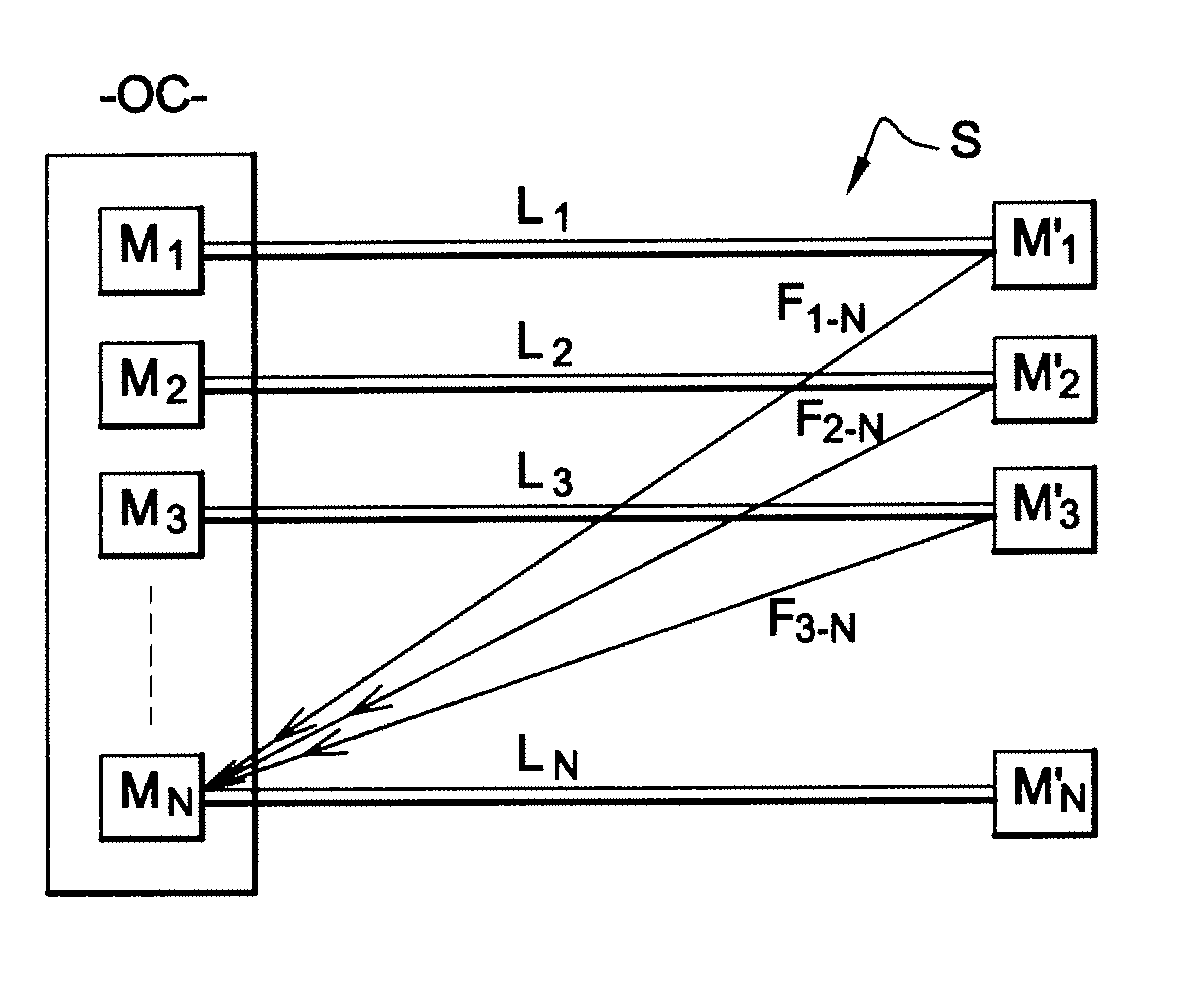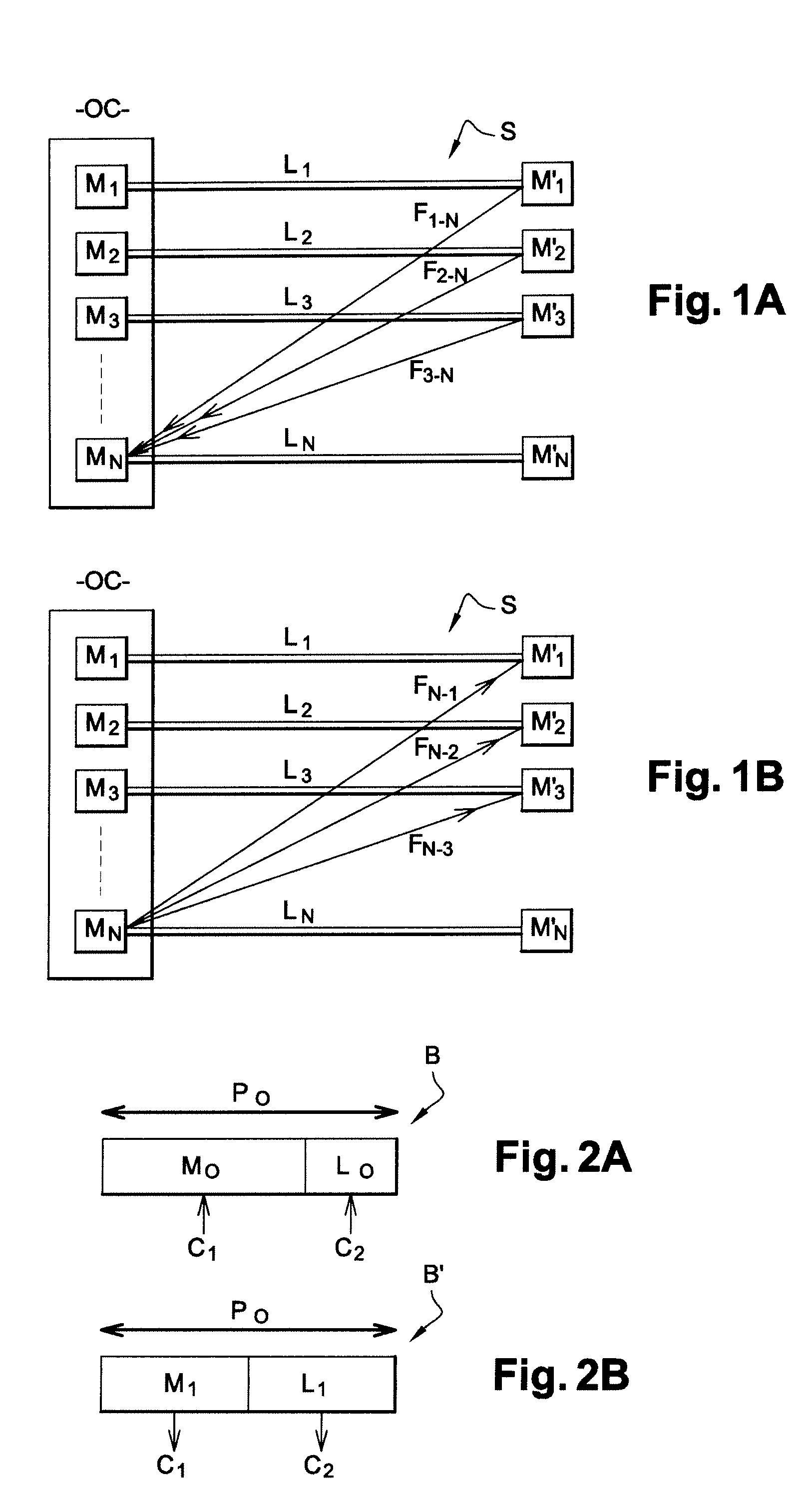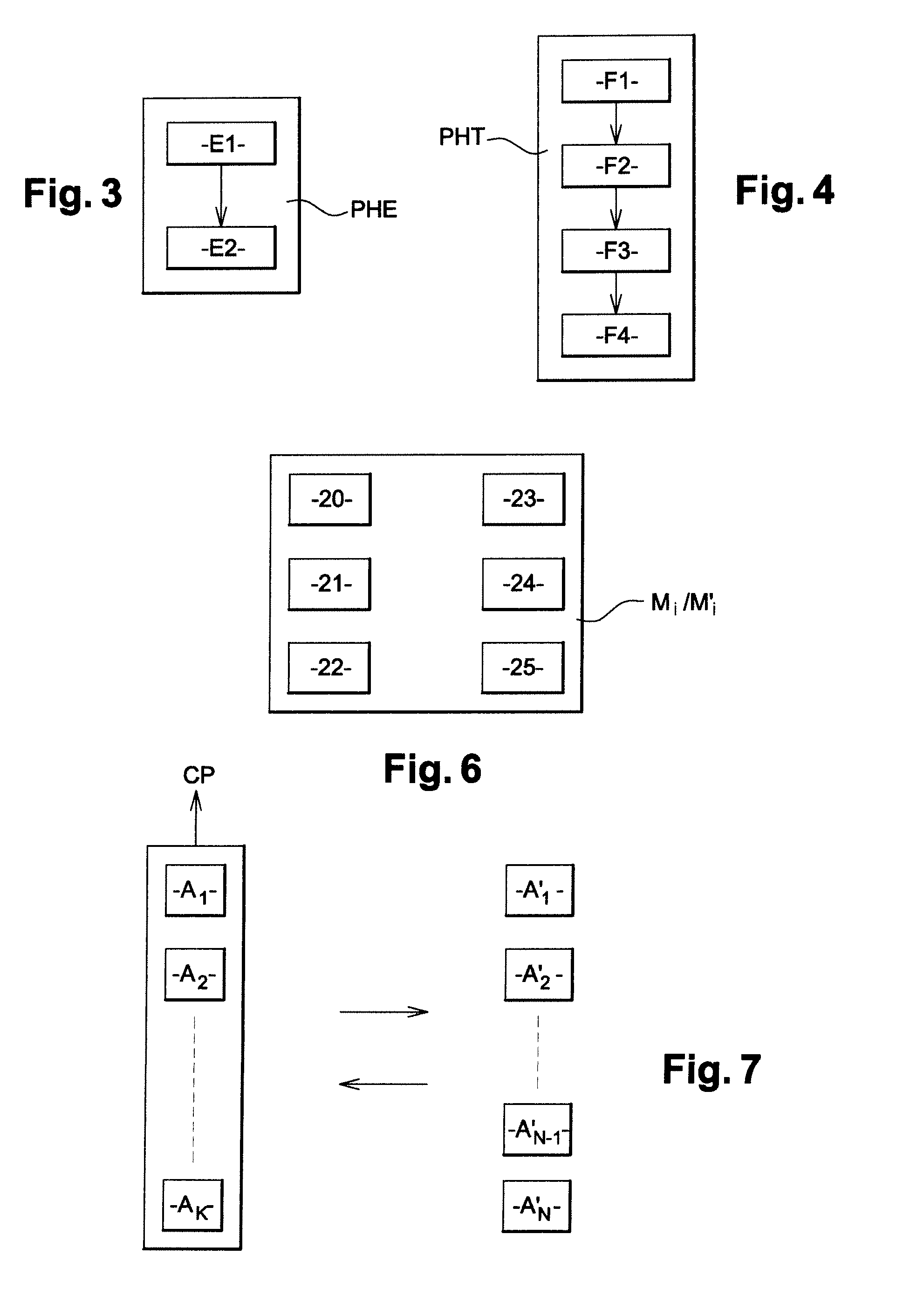Method of separating sources in a multisource system
a multi-source system and source technology, applied in the field of telecommunications, can solve the problems of difficult to obtain this data, difficult to know the frequency response of the new link, and disrupt the reception of data signals, and achieve the effect of simple implementation and simplified processing
- Summary
- Abstract
- Description
- Claims
- Application Information
AI Technical Summary
Benefits of technology
Problems solved by technology
Method used
Image
Examples
Embodiment Construction
[0053]FIG. 1A represents a communications system S in which the sending and data processing methods of an embodiment of the invention are used. Such a system includes a telephone central office OC including N−1 emitting / receiving devices Di, ε{1, . . . , N−1}. Such devices are xDSL modems, for example. Each modem Di in the telephone central office OC is connected by a link Li to a emitting / receiving device D′i belonging to an end user.
[0054]In a first embodiment of the invention, if the emitting / receiving devices Di in the telephone central office are xDSL modems, the emitting / receiving devices D′i are also xDSL modems. The link Li connecting the modem Di in the telephone central office to the corresponding modem D′i is an xDSL link, i.e. a link enabling transfer of data modulated by the xDSL technique. Such a link Li is a copper line that is part of a cable, for example.
[0055]In a system S such as that described with reference to FIG. 1A, each link Li conveys a signal containing da...
PUM
 Login to View More
Login to View More Abstract
Description
Claims
Application Information
 Login to View More
Login to View More - R&D
- Intellectual Property
- Life Sciences
- Materials
- Tech Scout
- Unparalleled Data Quality
- Higher Quality Content
- 60% Fewer Hallucinations
Browse by: Latest US Patents, China's latest patents, Technical Efficacy Thesaurus, Application Domain, Technology Topic, Popular Technical Reports.
© 2025 PatSnap. All rights reserved.Legal|Privacy policy|Modern Slavery Act Transparency Statement|Sitemap|About US| Contact US: help@patsnap.com



